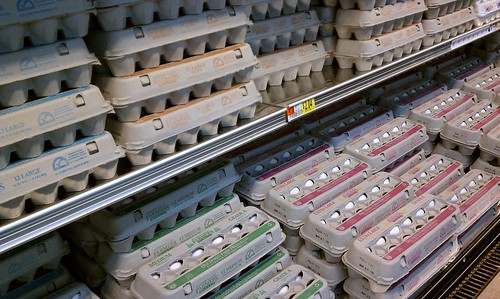Part 2 is where it gets tricky.
Our New Year's Resolution, Part 2: Lowering our prices on redesigned and handmade items.
 |
| Photos by Jordan Hampton |
 |
| Photos by Ian McFarlane |
Community Service is our in-house line of redesigned and handmade clothing. Our redesigns can be as simple as shortening the hem of a skirt, or taking the sleeves off a dress. Some are more involved, like adding leather sleeves to a wool coat, or completely changing the fit of a garment and transforming it into something new.
 |
| Photo by Jeremy Barton |
We bring out the potential we see in the thrift store find that is made of great fabric, or has a fabulous pattern, or a unique detail that we fell in love with. We strip away the ugly and the dowdy, the dated and the costume-y. We cut around holes and stains, and take off satin flowers and shoulder pads. What is left is flattering to the modern eye, and inspired by runway fashion and our favorite boutiques that we wish we could afford to shop at.
 |
| Photo on right by Ian McFarlane |
Taking it a step further, we also make clothes from scratch, using vintage and sustainable fabrics. Some of these are leftovers from a redesign project. The bottom of a shortened dress becomes a skirt, or a bandeau. We make party dresses out of curtains, and skater skirts out of a little boy's bed sheet that is covered with a print of all this favorite football teams. If we are lucky we find a roll of vintage fabric in the thrift store, or buy one from an elderly customer who had it stored since the 80s.
 |
| Photo by Sanni Baumgärtner |
For our 2014 collection I got to design my own fabric though a sponsorship from Spoonflower, a company based in North Carolina, that offers digital print on fabric from your own design. The revolutionary thing is that you can order a very small quantity, as little as one yard of fabric, which makes it possible for a young designer to create a unique collection without having to invest thousands of dollars to get started.
Inspired by lichen on a recent hike, I took Athens' photographer Ian McFarlane on a trip to the Blue Ridge Mountains to photograph lichen, moss, and tree bark in it's natural habitat, which Spoonflower then digitally printed on 100% organic cotton fabric. The Community team created a collection from these fabrics, mixed in with some vintage fabrics and redesigns. So the Community Service lichen print dress, the moss print men's button front shirt, and the bark print tank dress are truly unique and only available at Community.
 |
| Photos by Ian McFarlane |
Aside from the special organic cotton fabric from Spoonflower, the cost of material for a Community Service design is usually less than 30% of the price of the garment. The price for the redesigned and handmade items is mostly determined by the cost of labor. I still sew some of my designs, but as a business owner my time is limited. The majority of sewing is done by our seamstresses and re-designers, who either get paid by the hour or get a percentage of the retail price once the item sold. I care about them and their hard work, they are precious to me and the business, and without their skill, creativity, and enthusiasm, Community Service would not be what it is today. I am striving to raise their hourly pay, so they can make a living.
 |
| Photo by Becker Whitney |
Yet, we are determined to find ways to lower the prices of our Community Service pieces this year by creating faster and more efficient ways of producing them. Rather than taking a one-of-a-kind vintage dress that we are spending hours redesigning, we are working on developing patterns, so a dress can be made from a variety of fabrics, and in a variety of sizes. Once we have the patterns, we can produce more than one at a time, streamlining the process, so we can cut down on the time spent on each item. We are still working in very small numbers, we might make 6 skirts, not 600, so everything is still made from start to finish by one person, rather than a production line, where each seamstress just completes one step.
We still won't be able to compete with H&M or Forever 21 for rockbottom prices, but we provide better quality, and sustainability by producing locally and from vintage and ecofriendly materials. If you have ever been to Community, you know our seamstresses don't work in sweatshop conditions, but instead in a place filled with light and warmth. We are not aiming to create clothing the cheapest way possible without consideration for the people, animals, and environment involved in the process. Instead we aim for making your new favorite dress that is affordable and will last for as long as you want to wear it. And when your friends ask where you got it from, you now have a whole long story to tell.
Sanni Baumgärtner, owner of Community


















